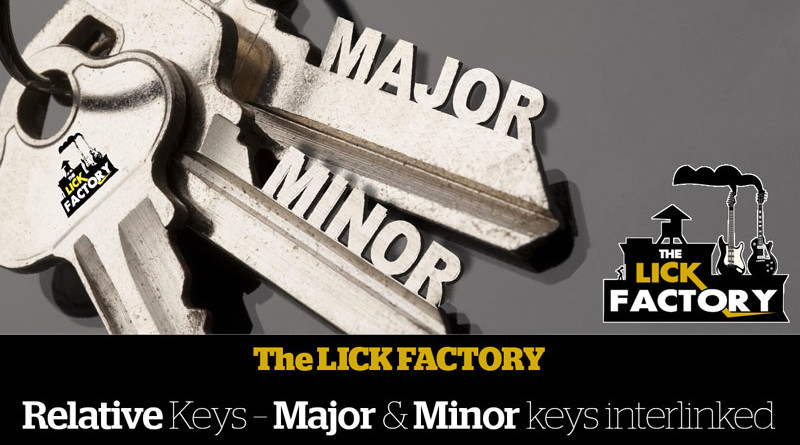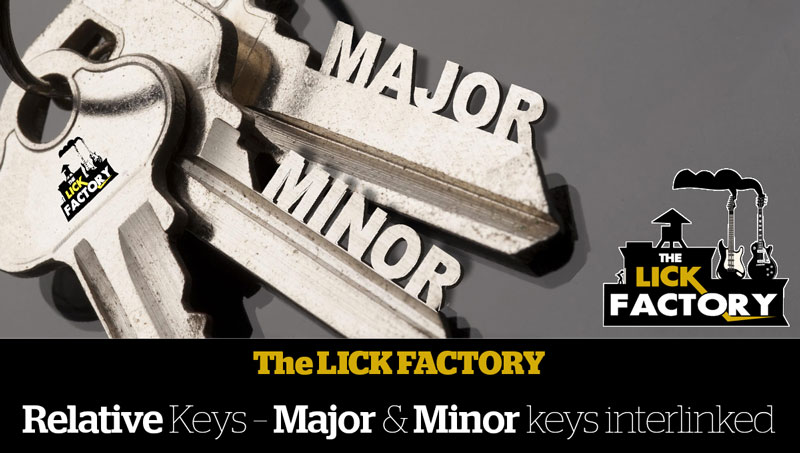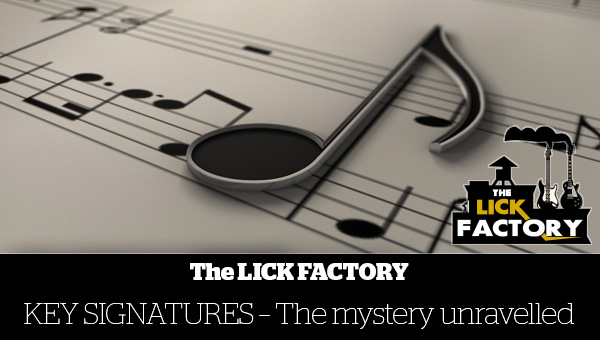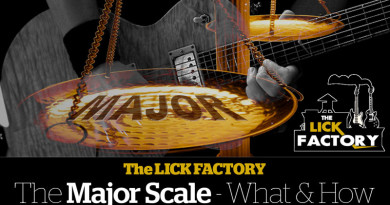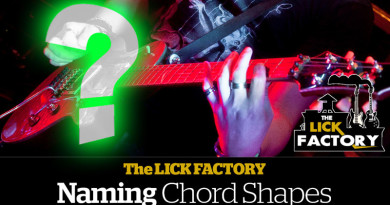Relative Keys – Major and Minor keys interlinked
There’s a little bit of confusion surrounding relative keys. In this theory lesson we explore the in’s and out’s and see how a simple change of perspective can completely unlock relative keys to benefit you in your playing.
Relative keys can be easily explained. It’s simply the concept that any Major key has a minor key that shares the same properties. This would apply to the Key Signature, the notes that appear within the scales and the chords that are created when building harmonized scales.
There are a lot of concepts in music theory that can completely change depending on the perspective you are looking at it from. Concepts like relative keys are a perfect example of this. Before we look at all the relative keys together, we’ll go through the process of how they come to be and how they can be identified.
RELATIVE KEYS: THE MAJOR SCALE
This journey begins at the construction of a Major scale. So lets start with a re-cap on how Major Keys are built. In the previous tutorial on Key Signatures, we touched on the Major scale formula and how it creates the Major scale sound.
When building up the Major scale using the Major scale formula (T, T, S, T, T, T, S) there is only one key that ends up without any sharped or flattened notes in it. This one scale is the C Major Scale.
It’s important to realize that the most important thing when constructing a scale is not the notes within it. It’s the spaces between them (otherwise known as intervals), that determine the overall sound of the scale.
The intervals that make up the Major Scale are: Tone, Tone, Semi-tone, Tone, Tone, Tone, and Semi-tone. Regardless of what note you begin with when building the Major Scale, the starting note is known as the “1” or the ‘Tonic”. Using the Major Scale formula, the first interval after the Tonic is a Tone. On the guitar this is a two-fret movement, which would bring you to the second note of the scale. The next interval between the 2nd and 3rd note, is a Semi-tone. This would be a 1-fret movement on the guitar. You’d continue this process following the formula until you complete all the intervals and finish the scale with the Tonic at the higher octave.
Putting this into practice, if we built a Major Scale from C, you will end up with:
C Tone D Tone E Semi-tone F Tone G Tone A Tone B Semi-tone C

When sharps and flats are involved, it’s important to remember that the letters must always ascend the musical alphabet. A, B, C, D, E, F, G. This basically prevents you from having two of the ‘same letter classification’ in the same scale. E.g.: D#, D or Db.
Following the Major scale formula with this is rule in mind, the A Major scale would then be:
A Tone B Tone C# Semi-tone D Tone E Tone F# Tone G# Semi-tone A

While the Ab Major scale would be: Ab Tone Bb Tone C Semi-tone Db Tone Eb Tone F Tone G Semi-tone Ab

RELATIVE KEYS: THE RELATIVE MINOR
The next step in the process is to identify the note that dictates the minor for the relative keys. At this stage, we’ll stop thinking about the intervals and concentrate on the individual notes. As mentioned earlier, relative keys share the same scale notes between both a Major and Minor scale. This step is simply recognizing which note within the Major scale we would treat as the 1st degree of the relative minor scale.
The note that meets the criteria is the 6th note, otherwise known as the 6th degree. In the case of the C Major scale above, the 6th note is the A. So if we played this Major scale starting and finishing on A, you would hear the distinct sound of the A minor. This scale is known as the NATURAL MINOR SCALE and would solidify that C Major and A Minor are relative keys.
Stepping back to the intervals, the natural minor would share the same steps, just starting at a different point. Once again the Major is: 1st Tone 2nd Tone 3rd Semi-tone 4th Tone 5th Tone 6th Tone 7th Semi-tone 8ve Starting on the 6th degree using the same intervals, we would end up with the Natural Minor. 1st Tone 2nd Semi-tone 3rd Tone 4th Tone 5th Semi-tone 6th Tone 8ve. The note that brings us back to the Major is the 3rd.
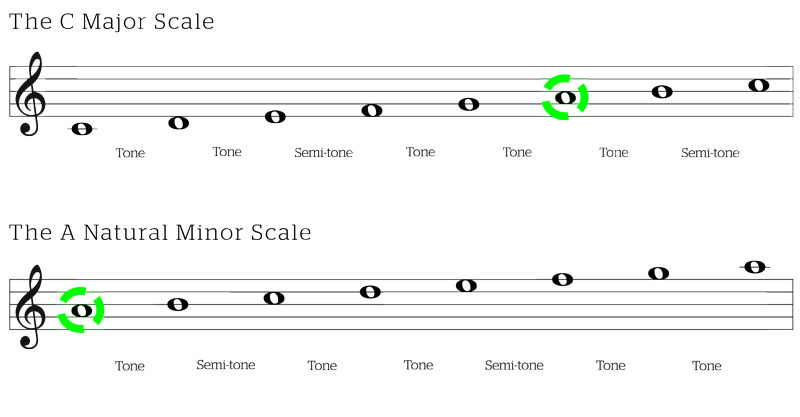
Below are all the Key signatures for the minor relative keys. You can read more about the Major Keys here.
RELATIVE KEYS: MINOR KEY SIGNATURES



RELATIVE KEYS: THE CIRCLE OF 5th’s
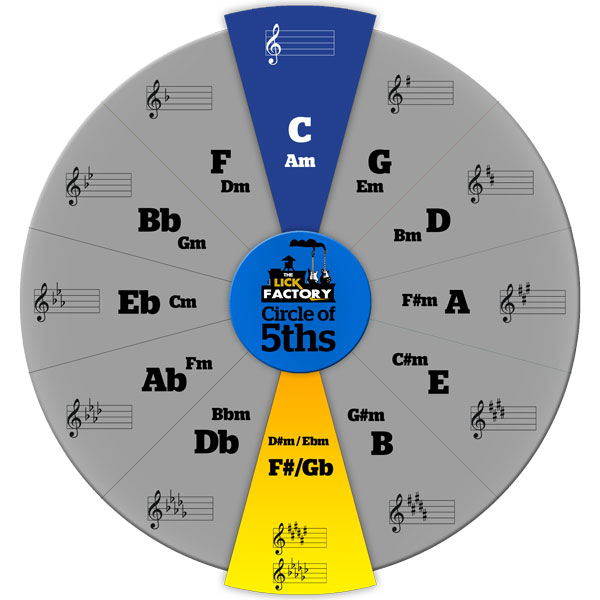
This article is based on concepts from the LICK FACTORY’s Preliminary Lessons. Everything you need to know to get started on your musical journey.
Need a quicker fix? the ULTIMATE CHORD GUIDE: Volume 1 might be the answer.
Who’s your Teacher?
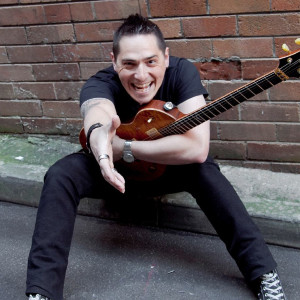
Kris Petersen is a name that has become synonymous with the Australian Music Industry. From clubs to stadiums, Kris has performed on every continent in the world and shared the stage with some of the world’s greatest artists.
In the last few years alone, Kris has performed with, or alongside Alice Cooper, Aerosmith, Orianthi, Van Halen, Billy Joel, Matt Sorumn (Guns n Roses), Eric Martin (Mr. Big), The Drifters, Tony MacAlpine, Buckcherry, Daryl Braithwaite, The Living End, Icehouse, Marcia Hines, The Screaming Jets, The Choirboys, Mental As Anything, Bruce Kulick (KISS), Leo Sayer, Pretty Boy Floyd and many more… read more

